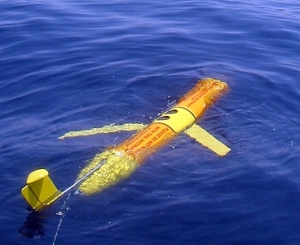Researchers at the Massachusetts Institute of Technology (MIT) have come up with an algorithm that enables robotic environment sensors to focus more on the environment parameters that change often, and at the same time monitor parameters that change at a slower rate.
The research team would be giving a presentation at the Institute of Electrical and Electronics Engineers’ International Conference on Robotics and Automation explaining the details of the test run of the algorithm done with underwater sensors.
 One of two Slocum gliders owned and operated by the USC Center for Integrated Networked Aquatic PlatformS (CINAPS).
One of two Slocum gliders owned and operated by the USC Center for Integrated Networked Aquatic PlatformS (CINAPS).
The algorithm was developed jointly by Daniela Rus, a professor of computer science and electrical engineering, and two postdocs, Mac Schwager and Stephen Smith. The algorithm is developed for robots that would be stationed to monitor a specific environment for a long duration; they would be monitoring rate of change in temperature, organisms and the chemical concentration level. The algorithm takes pre-determined rates of mathematical analysis as the basis and calculates the right velocity of robot movement for effective monitoring and sampling of data.
The research team faced many setbacks while working on the algorithms, such as absence of velocity controllers on robots on which the algorithm was tested initially. The algorithm is being tested to monitor underwater algae blooms. The sensors cannot have moving parts as they are underwater most of the time so have to judiciously use their power. The undersea sensors are in the shape of an airplane and have an inflatable bladder on the nose. The movement of the sensor is determined by the rate at which the bladder fills and empties itself.
The researchers therefore are faced with the challenge of coming up with an algorithm to determine a right trajectory for the sensor to collect maximum data about fast changing regions at the same time monitor regions that change slowly. The team is positive about extending the algorithm for robots used in cleaning up of the environments such as oil leaks and underwater wells.